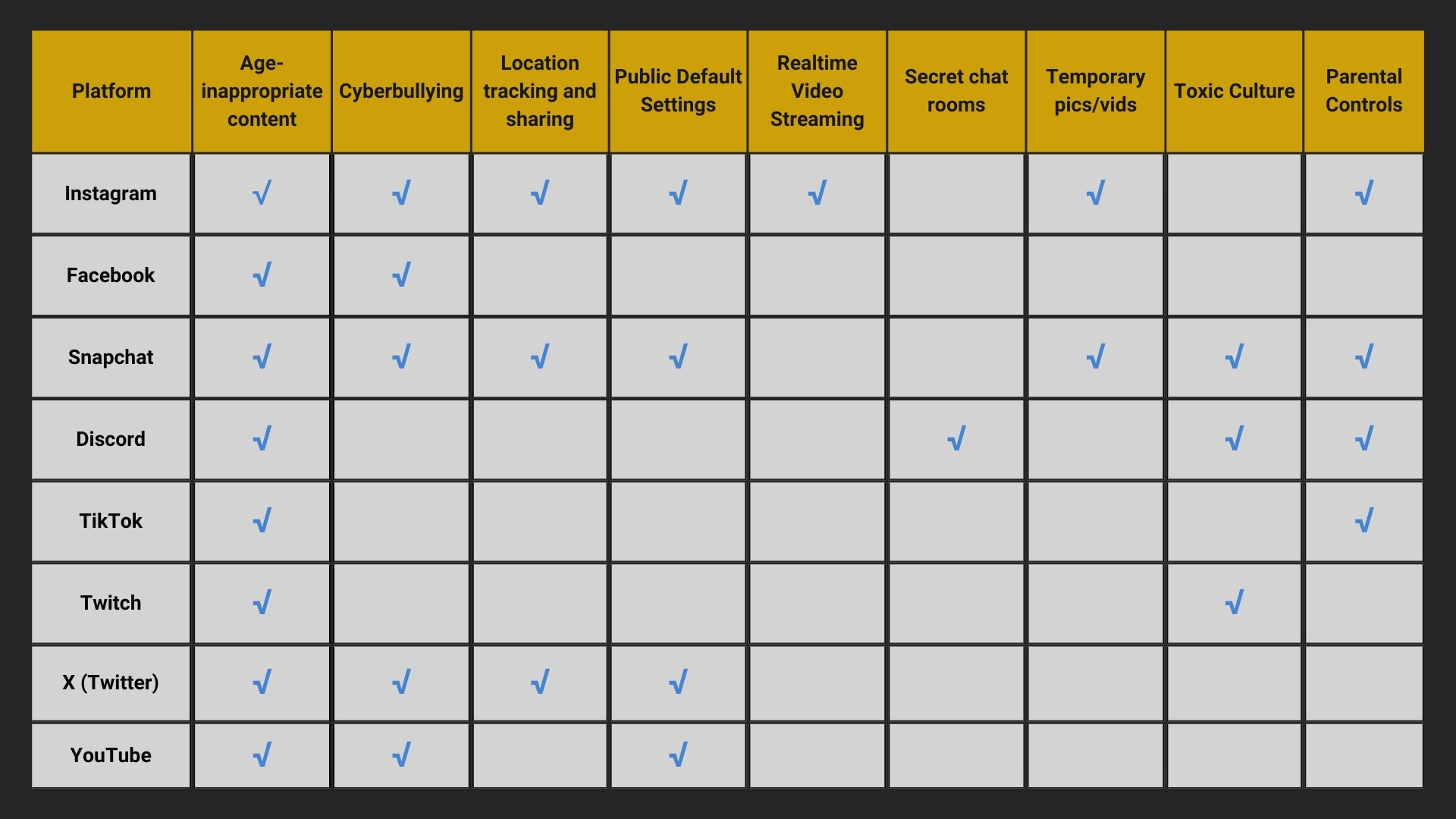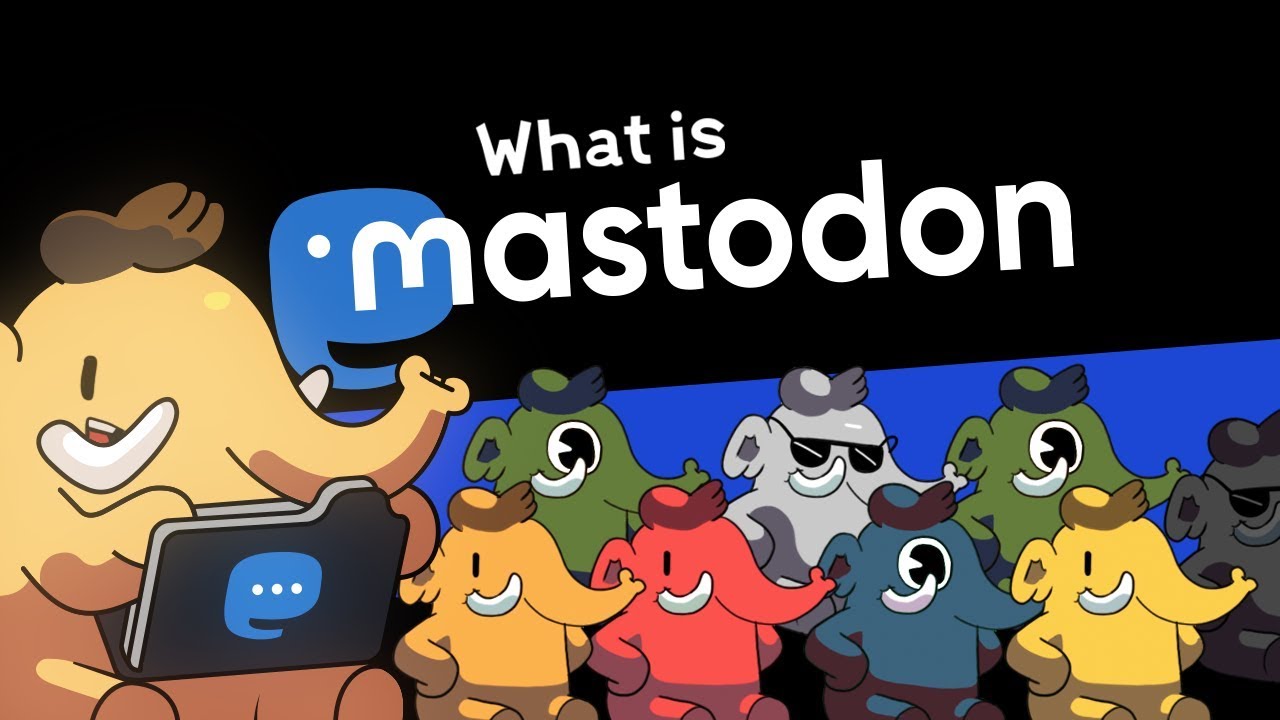Author: Lee Anderson
Published: April 15, 2024
As a parent of teenagers, social media is probably the main concern I have when trying to decide when I want my kids to have a smartphone (and I’m not alone). There are numerous mental health concerns related to social media and kids, not to mention the ability of strangers to contact and interact with our children so easily. This article will cover some of these concerns and end with some suggestions on how we as parents and caregivers can teach our children about social media and help them learn how to use it to their benefit.
Social Media and Its Battle for Teen Attention
In a recent Pew Research Survey on social media usage among teens, they found that in the last 8 or so years smartphone accessibility among teens has climbed from 73% to 95% – nearly every teen has access to a portable gateway to the internet! Additionally, there’s been a shift in what social media sites teens access on a regular basis with almost one in five teens watching YouTube “almost constantly” (TikTok, Instagram, and Snapchat were not far behind).
The U.S. Department of Health and Human Services (DHHS) published a Social Media and Youth Mental Health report in 2023. In it they recognize the ubiquitous (95%) usage of social media among teens and that about a third use it almost constantly. Surprisingly, 40% of children, ages 8-12, are using social media. This accessibility is concerning to parents and caregivers.
Local governments are joining parents in their concern about how social media is affecting teens, specifically its addictive nature. Forty-one states and D.C. are suing Meta Platforms, “alleging that the tech giant harms children by building addictive features into Instagram and Facebook.” Utah Governor Spencer Cox filed a lawsuit in 2023 against TikTok over child addiction harm. The press release stated, “After extensive investigation, the state [of Utah] alleges the social media giant illegally baits children into addictive and unhealthy use, blatantly misrepresents the app’s safety, and deceptively portrays itself as independent of its China-based parent company ByteDance…TikTok surreptitiously designed and deployed addictive features to hook young users into endlessly scrolling through the company’s app.”
An article in PsychologyToday points out that
- For younger adolescents (ages 10-14) social media can shape their ideas and bias their thinking while their brains are still in important stages of development.
- Teens are more susceptible to the spread of misinformation than adults.
- “A recent study [that] showed high amounts of stimulation [in teens] for posts with many likes and less stimulation for posts with fewer likes. The teen brain is reinforced to pay attention to and spread images with more likes, perpetuating the idea that likes matter more than developing one’s own opinion.
- Teens can feel devastated when their own posts don’t perform well.”
The Dangers of Social Media
While the topic of mental health and social media tends to dominate news headlines, there are other risks that need to be discussed. (For a discussion on the implications of posting photos of children on social media check out this previous post.) The ILF’s mission is to “identify child predators to help bring them to justice.” Using Open Source Intelligence (OSINT), our Predator Identification Team (PIT) finds the true identities of anonymous predators. As a non-vigilante organization, we have a strong relationship with U.S. and international law enforcement agencies. When a child predator’s identity is confirmed, a completed report is sent to law enforcement. Over the last 6 years, since the ILF started, we have submitted more than 500 cases to law enforcement!
The PIT combs through online forums, social media sites, the dark web, and more, in search of people harming children. When asked if there were any safer social media sites that kids could use, the short answer was a resounding, “No.” The complicated reality is that children are going to get access to the internet and can easily get on social media. This will make your child available to be contacted by others which increases chances that your child could be groomed. Unfortunately, we can’t keep our kids away from technology in today’s world, but there are some things you can do and learn in order to make your child’s world much safer; these things will be discussed in the next section of this post.
Another question that the PIT addressed was if there were any social media sites that predators tended to use more often, due to lax rules or policies. Top of their list was the social media site, Mastodon. After Elon Musk purchased Twitter (now “X”), lots of alternative sites started gaining traction and Mastodon was one of them. Mastodon is an open-source microblogging network that is similar to X, but decentralized, meaning that it’s not owned by anyone and thus not controlled by any single entity either. Anyone can run their own instance offering accounts to others and connecting to other instances. Any moderation at all is only applied locally and is dependent on the owner of the instance. For a brief tutorial on how Mastodon works, check out this video:
At the time of researching for this article, the ILF PIT said that Mastodon has the highest concentration of predators of any social media site they monitor. This is largely due to its users’ strong support of freedom of speech and lax rule enforcement. They’ve had scenarios where Child Sexual Abuse Material (CSAM) was posted to one of the Mastodon instances and the owner would not remove it because it was considered “art.” Additionally, the users on Mastodon are typically more technologically adept than users of other popular social media sites and tend to understand how to leverage private chatting to message each other off the platform anonymously, which can further lead to exposure to CSAM or grooming.
The last piece of advice the PIT provided was that it’s critical for parents to be aware of dating apps. There are a large number of accounts on popular dating sites being made by minors. The sign-up process to most dating apps involves little to no age verification beyond a check box that can be clicked by anyone regardless of their actual age. The following is an image of some of the popular dating apps. There are more than just these apps out there, but these should serve as a basis to help you get familiar with them so that when you review the apps on your child’s device you can more quickly recognize them.

Examples of dating apps according to one site.
Commonsensemedia.org is another great resource for understanding online safety as it relates to kids. In an article that discussed red flags in social media sites that parents should know about they said the following, “Does a red flag mean your kid shouldn’t use a particular app? Not at all. Most kids use social media apps safely — and kids don’t always use every feature of every app. Also, you can often disable certain features so they’re no longer a problem. Finally, talking about using social media safely, responsibly, and respectfully is the best way to help your kid identify and avoid red flags.” Below is a list of a few of the most common social media red flags and some of the apps they are found in.

Suggestions for Teaching Teens About Social Media
Alright, we’ve done a lot of talking about how scary social media is; let’s spend some time focusing on what we can do to make it less scary and more of a positive learning experience. There are a few social media sites that allow for a level of parental controls or filtering of mature content, so be sure to take advantage of those when available. Additionally, when considering whether to allow your child access to social media, it’s important to understand the following:
- Many social media sites default to public settings (anyone can see posts)
- Social media sites are generally not well-moderated, cyberbullying and grooming can and do occur
- Some social media sites are focused on anonymity or disappearing posts, giving a false sense of privacy and security when teens can easily screenshot the post before it’s gone
- Some social media sites will share locations with posts, putting your child’s physical safety at risk
- Many social media sites encourage connecting with strangers
The American Psychological Association (APA) shared the following recommendations in their health advisory on social media use in adolescence:
- Monitor your child’s social media use periodically reviewing, openly discussing, coaching, etc. Autonomy may increase gradually as kids age and as they gain digital literacy skills.
- Minimize exposure to online hate towards marginalized groups.
- Ensure that social media use does not interfere with sleep.
- Limit social media for social comparison, specifically around beauty- or appearance-related content.
- Actively model healthy social media behavior.
- Train your child in social media literacy.
What is social media literacy? So glad you asked. This just means the condition or quality of being knowledgeable in how to use social media in a healthy way. In the same article linked above, the APA shared some tips to help teens (or anyone) understand how to be more literate in social media. It is important for social media users to:
- Question the accuracy and how representative the content is
- Understand the tactics used to spread mis- and disinformation
- Limit “overgeneralization” and “misestimation” errors that lead users to incorrectly estimate others’ behavior or attitudes
- Recognize signs of problematic social media use
- Know how to build and nourish healthy online relationships
- Know how to solve conflicts that can emerge on social media platforms
- Know how to refrain from excessive social comparisons online and understand how images can be manipulated
- Know how to recognize online structural racism and critique racist messages
- Know how to safely communicate about mental health online
Prior to having these conversations around social media, it is essential that your child feels safe talking to you about potentially difficult issues. Robin Dreeke, ILF board member emeritus and former head of the FBI’s Counterintelligence Behavioral Analysis Program, offers a roadmap for ensuring open communication and your children’s safety through the acronym TRUST. Following this roadmap will help make your home a safe environment for your child, allowing them to trust you with sensitive information that could end up saving their lives.
Conclusion
As much as some of us would like to, we can’t keep kids away from social media forever. They will eventually venture out and begin their independent lives. The key takeaways from this article are recognizing that:
- It is essential that we educate ourselves as parents and caregivers early on so that we can set our children up for success as they continue to grow and develop.
- Social media is a cause for great concern in the mental health of those youth who are in our care…
- We need to teach teens how to use social media in a healthy way, which means we need to model good behavior.
- We need to know what the apps look like and understand some of the associated risks. Mastodon and dating apps are some that are best to keep most kids clear of.
- Of utmost importance, we need to make sure that our home is a place where open and honest communication is welcomed. We need to do as Ted Lasso says, “Be curious, not judgmental,” and our teens will have a brighter future because of our efforts to love and guide them.






